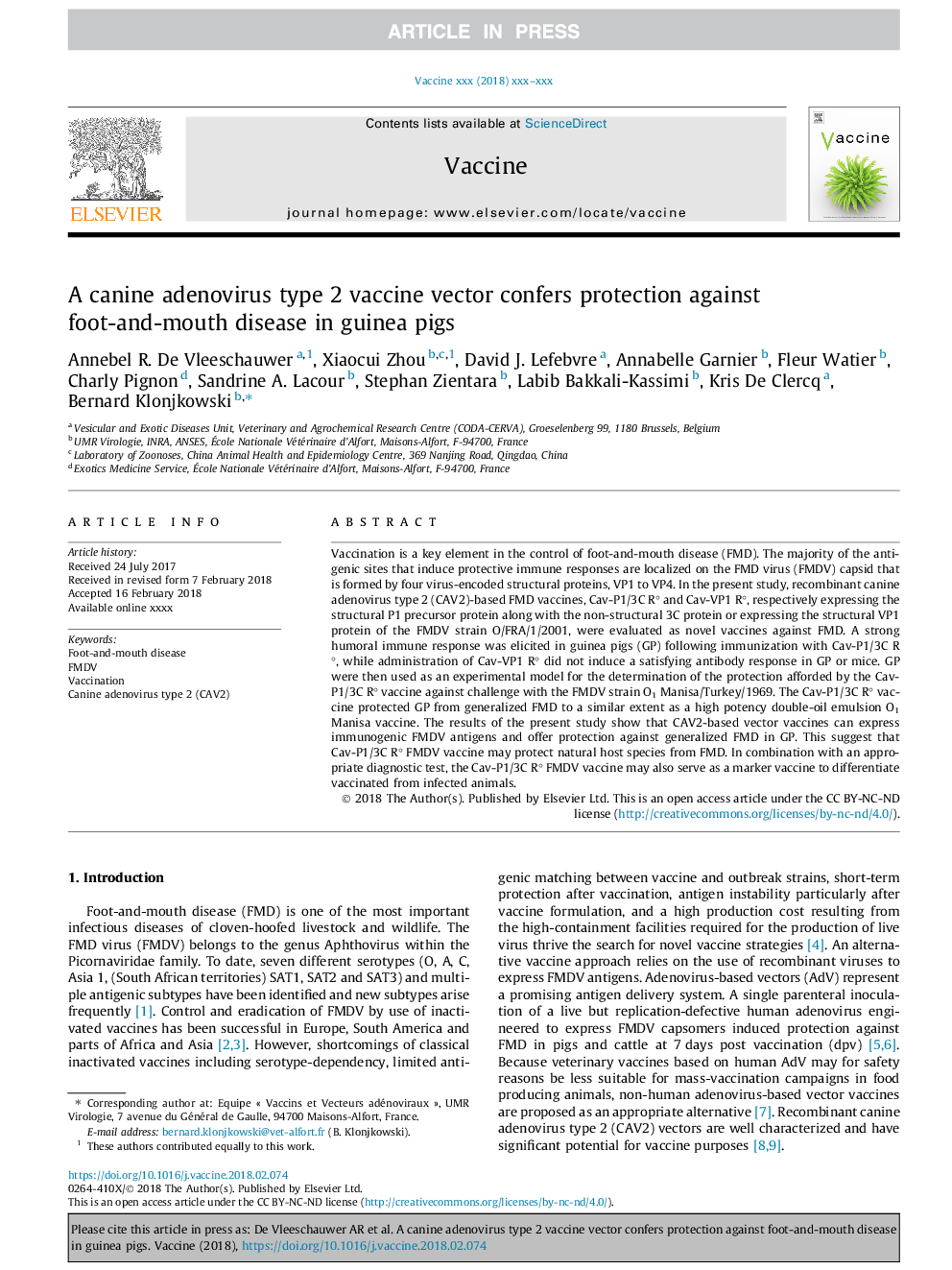| Article ID | Journal | Published Year | Pages | File Type |
|---|---|---|---|---|
| 8485819 | Vaccine | 2018 | 6 Pages |
Abstract
Vaccination is a key element in the control of foot-and-mouth disease (FMD). The majority of the antigenic sites that induce protective immune responses are localized on the FMD virus (FMDV) capsid that is formed by four virus-encoded structural proteins, VP1 to VP4. In the present study, recombinant canine adenovirus type 2 (CAV2)-based FMD vaccines, Cav-P1/3C R° and Cav-VP1 R°, respectively expressing the structural P1 precursor protein along with the non-structural 3C protein or expressing the structural VP1 protein of the FMDV strain O/FRA/1/2001, were evaluated as novel vaccines against FMD. A strong humoral immune response was elicited in guinea pigs (GP) following immunization with Cav-P1/3C R°, while administration of Cav-VP1 R° did not induce a satisfying antibody response in GP or mice. GP were then used as an experimental model for the determination of the protection afforded by the Cav-P1/3C R° vaccine against challenge with the FMDV strain O1 Manisa/Turkey/1969. The Cav-P1/3C R° vaccine protected GP from generalized FMD to a similar extent as a high potency double-oil emulsion O1 Manisa vaccine. The results of the present study show that CAV2-based vector vaccines can express immunogenic FMDV antigens and offer protection against generalized FMD in GP. This suggest that Cav-P1/3C R° FMDV vaccine may protect natural host species from FMD. In combination with an appropriate diagnostic test, the Cav-P1/3C R° FMDV vaccine may also serve as a marker vaccine to differentiate vaccinated from infected animals.
Related Topics
Life Sciences
Immunology and Microbiology
Immunology
Authors
Annebel R. De Vleeschauwer, Xiaocui Zhou, David J. Lefebvre, Annabelle Garnier, Fleur Watier, Charly Pignon, Sandrine A. Lacour, Stephan Zientara, Labib Bakkali-Kassimi, Kris De Clercq, Bernard Klonjkowski,
